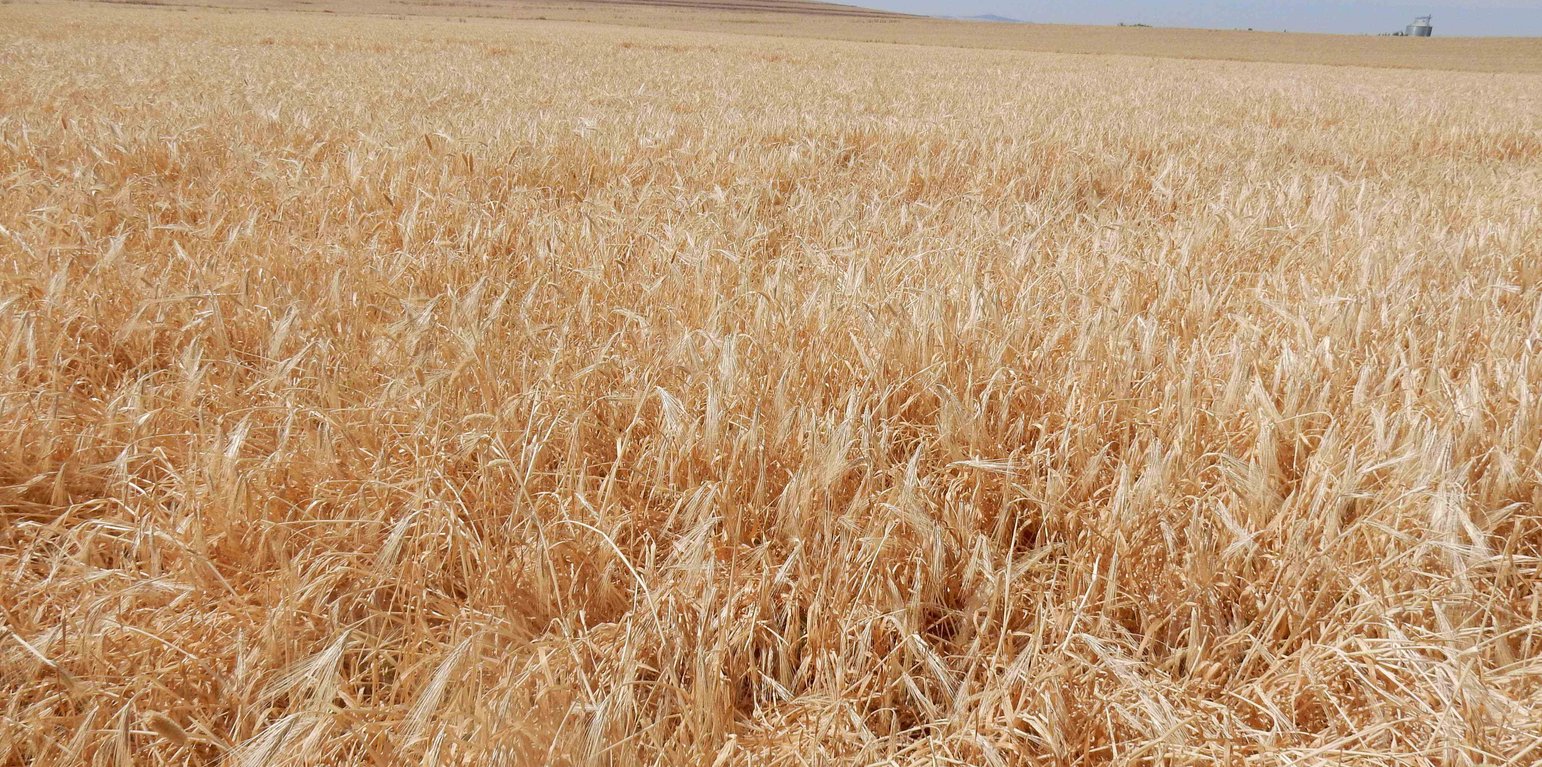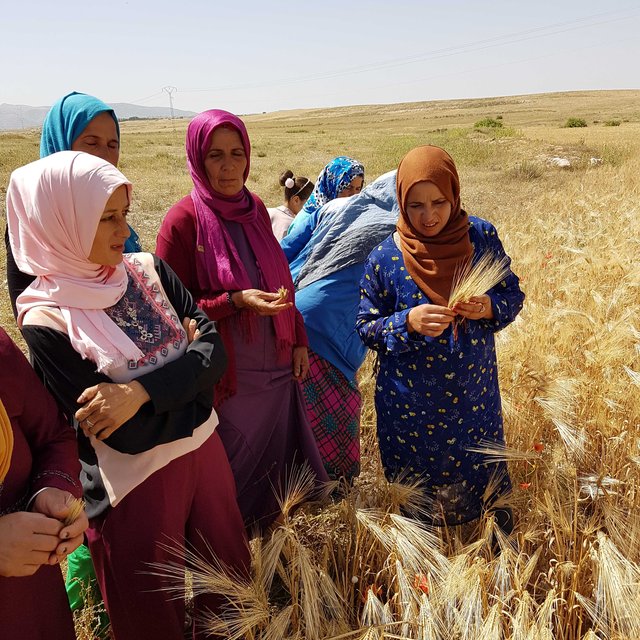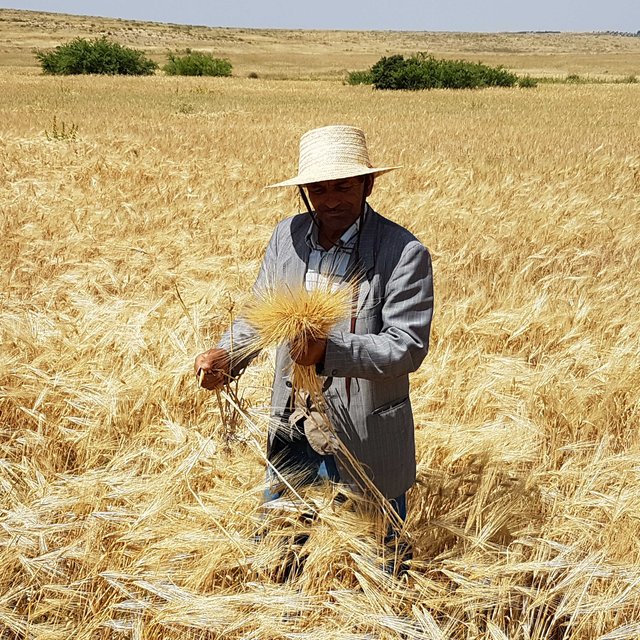



Tunisia has a semi-arid climate with annual precipitation ranging between 200 and 450 millimetres. Many people are dependent on the agricultural sector. Typically, barley is cultivated and used for fodder or sale. Barley production is increasingly in danger of failure because of droughts worsened by climate change. Therefore, a new and drought tolerant barley variety was sought. NARS developed such seed by using germplasm that was made available by the International Center of Agricultural Research in Dry Areas (ICARDA).
As adoption of technologies is often the most difficult part of the innovation process, special care was put into this. It was found that combining different extension methods ranging from technical training to information through SMS led to the highest adoption. And solely focusing on the technical training was the most cost-effective approach. The targeted beneficiaries were small-scale farmers in central Tunisia. Their farm enterprises consist predominantly of small ruminant and cereal production. On average their farm size is 5 hectares and their flocks comprise 20 to 40 sheep and/or goats.
The benefits of the new, drought tolerant variety 'Kounouz' encompass enhanced farm income through reduced production risks and increased yields because Kounouz is better adapted to the semi-arid conditions. It makes more efficient use of water, therefore, Kounouz can produce grain with 300 millimetres of rainfall, whereas the alternative varieties (e.g., Rihane) need at least 350. Under favourable conditions (around 400 millimetres) Kounouz has higher yields than currently available varieties. Kounouz reaches 3 tonnes per hectare of grain, and 4.5 tonnes of straw.
The adoption of this variety has already made significant strides. By 2019, approximately 617 tonnes of certified seeds were available. This accomplishment was the result of successful collaboration between a large-scale cooperative, COSEM, and a private seed company, TUNIFERT. Presently, two more cooperatives, namely SOSEM and CCSPS, have also become actively involved.
It is worth noting that a mere 5% of the Kounouz seeds are estimated to be sourced from certified suppliers, with the majority being multiplied on individual farms. Consequently, it is estimated that the cultivation of Kounouz now spans over 20,000 hectares.
To further facilitate widespread adoption, the establishment of demonstration plots within target regions is imperative. This approach allows farmers, seed companies, and cooperatives to witness production first-hand and become persuaded of its benefits. However, the provision of adequate technical support and comprehensive coaching to farmers is indispensable.
The recommended cultivation practices for Kounouz are typically outlined as follows:
Field preparation, involving ploughing, is initiated at the onset of the rainy season, which generally occurs between September and October. Sowing activities take place in the months of November to December. In order to effectively manage weed growth, herbicide applications are undertaken from December to January. The quantity of herbicide utilized is contingent upon various factors, including climatic conditions, precipitation levels, and the preceding crop type. Notably, cultivating cereal crops after another cereal crop tends to result in a higher weed population compared to the cultivation of legume-cereal rotations. Depending on the geographical location of the farm, the application of mineral fertilizer is scheduled for the months of January to February in North-Western Tunisia. This timeline ensures that the fertilizer is strategically administered to optimize crop growth and yield.
We would like to thank BMZ/ GIZ who supported this innovation through their contributions to the “Mind the Gap” project as well as Tunisian NARES (INRAT, AVFA, OEP, CRDA) for co-implementing project activities

ສະຖານທີ່: ຕູນິເຊຍ
ຈໍານວນ ພື້ນທີ່ ທີ່ໃຊ້ ເຕັກໂນໂລຢີ ທີ່ໄດ້ວິເຄາະ: 10-100 ພຶ້ນທີ່
ການແຜ່ກະຈາຍຂອງເຕັກໂນໂລຢີ: ແຜ່ຂະຫຍາຍຢ່າງໄວວາໃນພື້ນທີ່ (approx. 0.1-1 ກມ 2)
ຢູ່ໃນເຂດປ່າສະຫງວນທີ່ບໍ?: ບໍ່ແມ່ນ
ວັນທີຂອງການປະຕິບັດ: 2021
ປະເພດຂອງການນໍາສະເໜີ





| ລະບຸ ປັດໃຈ ນໍາເຂົ້າ ໃນການຜະລີດ | ຫົວໜ່ວຍ | ປະລິມານ | ຕົ້ນທຶນ ຕໍ່ຫົວໜ່ວຍ (Tunisian Dinar) | ຕົ້ນທຶນທັງໝົດ ຂອງປັດໃຈຂາເຂົ້າ ໃນການຜະລິດ (Tunisian Dinar) | % ຂອງຕົ້ນທຶນທັງໝົດ ທີ່ຜູ້ນໍາໃຊ້ທີ່ດິນ ໃຊ້ຈ່າຍເອງ |
| ແຮງງານ | |||||
| Field preparation | Person-hour | 6.0 | 25.0 | 150.0 | |
| Sowing | Person-hour | 1.0 | 25.0 | 25.0 | |
| Fertilizer application | Person-hour | 0.5 | 25.0 | 12.5 | |
| Weeding | Person-hour | 0.5 | 25.0 | 12.5 | |
| ອຸປະກອນ | |||||
| Plow | Machine-hour | 8.5 | 25.0 | 212.5 | |
| Seeder | Machine-hour | 0.5 | 12.0 | 6.0 | |
| Spreader | Machine-hour | 0.5 | 12.0 | 6.0 | |
| Combine | Machine-hour | 1.0 | 80.0 | 80.0 | |
| Pressor (for straw processing) | Machine-hour | 1.0 | 100.0 | 100.0 | |
| Sprayer | Machine-hour | 2.0 | 12.0 | 24.0 | |
| ວັດສະດຸໃນການປູກ | |||||
| Seed | Kilograms | 100.0 | 0.78 | 78.0 | |
| ຝຸ່ນ ແລະ ຢາຊີວະພາບ | |||||
| DPA | Kilogram | 100.0 | 0.67 | 67.0 | |
| Ammonite | Liter | 100.0 | 0.54 | 54.0 | |
| Zoom (Herbicide) | Liter | 100.0 | 0.25 | 25.0 | |
| Axial (Herbicide) | Liter | 1.0 | 110.0 | 110.0 | |
| ອື່ນໆ | |||||
| Herbicide application (labour) | Person-hour | 0.5 | 25.0 | 12.5 | |
| Harvesting (labour) | Person-hour | 1.0 | 80.0 | 80.0 | |
| ຕົ້ນທຶນທັງໝົດ ທີ່ໃຊ້ໃນການບໍາລຸງຮັກສາ ເຕັກໂນໂລຢີ | 1'055.0 | ||||
| ຄ່າໃຊ້ຈ່າຍທັງໝົດ ສຳລັບການບົວລະບັດຮກສາເຕັກໂນໂລຢີ ເປັນສະກຸນເງີນໂດລາ | 351.67 | ||||